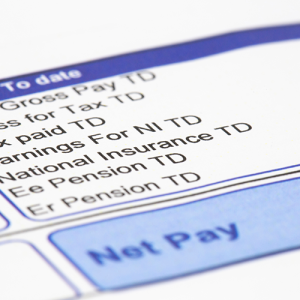By Duncan Brown
01 March 2011
As staff feel the impact of redundancies and a pay freeze, employers need to carve out a bit extra to make them feel valued. Duncan Brown shows how
Cutting the £150bn public spending deficit means cutting the public sector pay bill, which is estimated to be even bigger – around £160bn.
The coalition government wasted no time implementing a pay freeze on those earning more than £21,000 and setting the scene for the loss of more than 500,000 jobs. Public sector pensions are also under the spotlight, with the Hutton Review looking at ways of cutting the costs. And some public sector employers are seeking pay cuts in return for job guarantees.
But how can we expect disengaged and demotivated public servants to ensure the coalition’s radical and extensive policy programme is effectively implemented, along with wholesale reorganisations in the NHS and education?
Institute for Employment Studies’ research highlights how successful turnaround organisations in the private sector, such as Jaguar Land Rover and KPMG, weathered the recession by using, for example, pay and working time cuts. But they also paid high attention to retaining the engagement of their staff, which they are now benefiting from as the economy slowly recovers.
So what should public sector employers be doing to motivate and engage their staff during similarly tough times?
1. Clarify and promote the purpose of the organisation
The IES research shows that an over-riding purpose beyond profit – a ‘big idea’, a cause that involves all employees – is critical to the long-term, sustainable success of an organisation. The public sector potentially has an advantage over the private sector in this, in that many employees join public service organisations for precisely that reason, to serve the public. But too often they are disappointed and feel constrained by lack of direction and bureaucratic procedures. Now is the perfect time to release that energy by involving employees in restating and re-energising the purpose of the organisation and involving them more in achieving it. Many charities manage to do this on shoestring budgets, so why can’t parts of the public sector follow suit?
2. Take a long-term perspective…
Two years after the economic ripples caused by the 9/11 attack on the US, the IES asked organisations how they had coped. Two-thirds of those that had cut jobs said they believed that their actions had damaged their growth prospects during the recovery. For example, they felt they had made the wrong people redundant, demotivating high performing staff who subsequently left, and so on. So it is important to look at all options and agree a plan, rather than just make short-term cost cuts and redundancies, which you might regret.
3. …And get a workforce plan
Now is the time that HR and organisational development directors should be building a vision of what their probably slimmed-down organisation will look like in three to five years’ time – and planning the workforce requirements to achieve that. Consider a range of different scenarios and organisation forms in these unpredictable times. Could higher levels of flexible working, or external partnerships, potentially provide better services at lower cost in the future, yet help to preserve jobs and staff commitment?
4. Introduce flexibility and choice into rewards
Given the choice, a single 25-year-old might place a higher value on the cash elements of their reward package than a working parent, who might value flexible working and longer holiday entitlements more. Introducing cost-effective voluntary benefits is a route that several public sector employers, such as Kent County Council, have been pursuing very successfully. This can enhance employee commitment and the cost-effectiveness of employer investments in rewards.
5. Improve reward communications
As many public sector staff have had their pay frozen, managers need to look at ways of increasing the perceived value of the employment package. Recent research, for example, shows that few public sector employees understand the true value of their pension plan. Better communication about the reward package, for example with annual total reward statements, is one option.
6. Play fair
IES’s research found that a mutual sense of all ‘sharing in the pain’ was essential for employees to accept cost and pay-cutting packages. Employers need to demonstrate that senior managers’ pay is under as much constraint as that of other employees, and that pay and bonus schemes are managed fairly.
7. Give employees a financial stake
Mutual and co-operative structures are now being considered for parts of the public sector.Not only can these give employees a financial stake in their organisation but also potentially the benefits of the so-called ‘John Lewis model’ of organisation, management and staff involvement, which is associated with high-performing employers. In addition, such collective ownership and financial sharing models often suit public sector cultures better than individual bonus schemes and performance-related pay.
8. Involve people and treat them with dignity
Employee autonomy and involvement in decision-making are invariably the most important and powerful drivers of staff engagement. Yet at times of cost-cutting and redundancies we often see the reverse behaviour from management: decisions taken behind closed doors and communicated in a hurried way, to try and ‘get the bad news over with’. It never works. Employees are aware of the size of the deficit and can contribute ideas to improve performance at lower cost. So open up these upward communications channels, don’t close them off. And if redundancies become impossible to avoid, be as generous as possible and treat people with dignity.
9. Encourage non-financial recognition
It doesn’t cost anything for a manager to say thank you to employees; or to trust them to work just as hard at home if the washing machine needs to be fixed one day; or for a visiting executive to spend time listening to them. It costs peanuts to recognise their success with a small customer service or innovation award, and the competition involved can generate lots of interest and fun. So get your managers together, develop their recognition skills and give them some tools, such as non-financial awards, to help them recognise the valuable contributions of their staff.
10. Manage performance and ‘outputs’, not time and ‘inputs’
The public sector needs to move away from outdated management models that assume productivity relates to hours worked and presence in the workplace. Flexible and short-term working is not just a ‘nice’ benefits provision for working parents but can be an effective strategy for increasing productivity and service levels. High performance also needs to be recognised. Most private sector employers who operated with a pay ‘freeze’ in reality found ways of distributing their pay budgets to give income rises to high-performing and high-potential employees. The public sector needs to consider similar actions for its best staff.
Duncan Brown is the Institute for Employment Studies’ director of HR business development but is to join AonHewett as a principal in March


















